 W
WThe Alphabetum Kaldeorum is one of the best known ciphers of the Middle Ages. Its name refers to the Chaldea, whose inhabitants during the medieval era were reputed to have mysterious and magical knowledge.
 W
WThe Arnold Cipher was a book cipher used by John André and Benedict Arnold during the negotiations that led to Arnold's failed attempt to surrender West Point to the British in 1780.
 W
WAn autokey cipher is a cipher that incorporates the message into the key. The key is generated from the message in some automated fashion, sometimes by selecting certain letters from the text or, more commonly, by adding a short primer key to the front of the message.
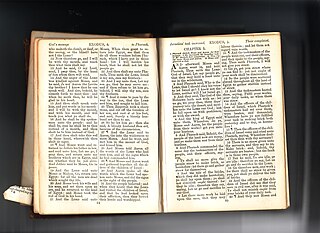 W
WA book cipher, or Ottendorf cipher, is a cipher in which the key is some aspect of a book or other piece of text. Books, being common and widely available in modern times, are more convenient for this use than objects made specifically for cryptographic purposes. It is typically essential that both correspondents not only have the same book, but the same edition.
 W
WThe gravestone of Thomas Brierley in Mellor, Greater Manchester is the only one in the United Kingdom known to incorporate masonic pigpen cypher in its inscription.
 W
WIn cryptography, a Caesar cipher, also known as Caesar's cipher, the shift cipher, Caesar's code or Caesar shift, is one of the simplest and most widely known encryption techniques. It is a type of substitution cipher in which each letter in the plaintext is replaced by a letter some fixed number of positions down the alphabet. For example, with a left shift of 3, D would be replaced by A, E would become B, and so on. The method is named after Julius Caesar, who used it in his private correspondence.
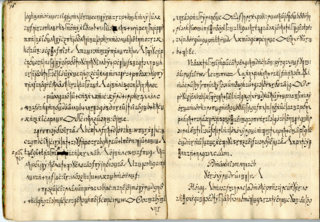 W
WThe Copiale cipher is an encrypted manuscript consisting of 75,000 handwritten characters filling 105 pages in a bound volume. Undeciphered for more than 260 years, the document was cracked in 2011 with the help of modern computer techniques. An international team consisting of Kevin Knight of the University of Southern California Information Sciences Institute and USC Viterbi School of Engineering, along with Beáta Megyesi and Christiane Schaefer of Uppsala University in Sweden, found the cipher to be an encrypted German text. The manuscript is a homophonic cipher that uses a complex substitution code, including symbols and letters, for its text and spaces.
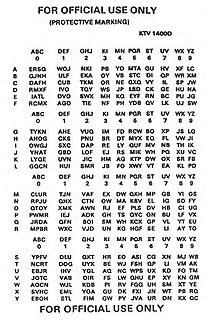 W
WThe DRYAD Numeral Cipher/Authentication System is a simple, paper cryptographic system employed by the U.S. military for authentication and for encryption of short, numerical messages. Each unit with a radio is given a set of matching DRYAD code sheets. A single sheet is valid for a limited time, called a cryptoperiod.
 W
WIn classical cryptography, the Hill cipher is a polygraphic substitution cipher based on linear algebra. Invented by Lester S. Hill in 1929, it was the first polygraphic cipher in which it was practical to operate on more than three symbols at once.
 W
WThe M-94 was a piece of cryptographic equipment used by the United States army, consisting of several lettered discs arranged as a cylinder. It was also employed by the US Navy, under the name CSP 488.
 W
WThe pigpen cipher is a geometric simple substitution cipher, which exchanges letters for symbols which are fragments of a grid. The example key shows one way the letters can be assigned to the grid.
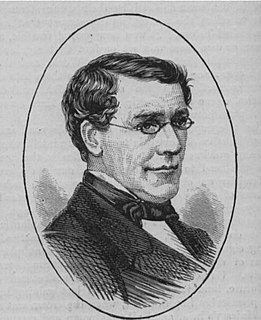 W
WThe Playfair cipher or Playfair square or Wheatstone–Playfair cipher is a manual symmetric encryption technique and was the first literal digram substitution cipher. The scheme was invented in 1854 by Charles Wheatstone, but bears the name of Lord Playfair for promoting its use.
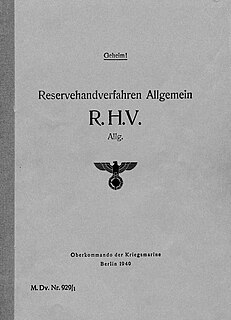 W
WReservehandverfahren (RHV) was a German Naval World War II hand-cipher system used as a backup method when no working Enigma machine was available.
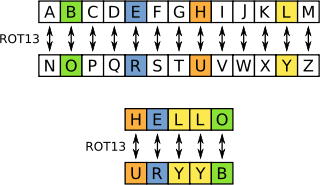 W
WROT13 is a simple letter substitution cipher that replaces a letter with the 13th letter after it in the alphabet. ROT13 is a special case of the Caesar cipher which was developed in ancient Rome.
 W
WIn cryptography, a scytale is a tool used to perform a transposition cipher, consisting of a cylinder with a strip of parchment wound around it on which is written a message. The ancient Greeks, and the Spartans in particular, are said to have used this cipher to communicate during military campaigns.
 W
WIn cryptography, the tabula recta is a square table of alphabets, each row of which is made by shifting the previous one to the left. The term was invented by the German author and monk Johannes Trithemius in 1508, and used in his Trithemius cipher.
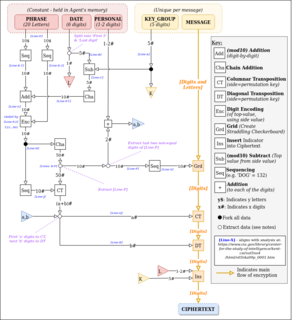 W
WThe VIC cipher was a pencil and paper cipher used by the Soviet spy Reino Häyhänen, codenamed "VICTOR".
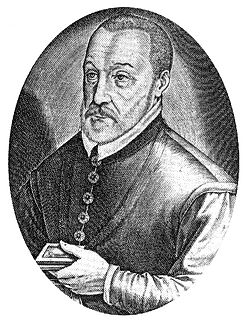 W
WThe Vigenère cipher is a method of encrypting alphabetic text by using a series of interwoven Caesar ciphers, based on the letters of a keyword. It employs a form of polyalphabetic substitution.